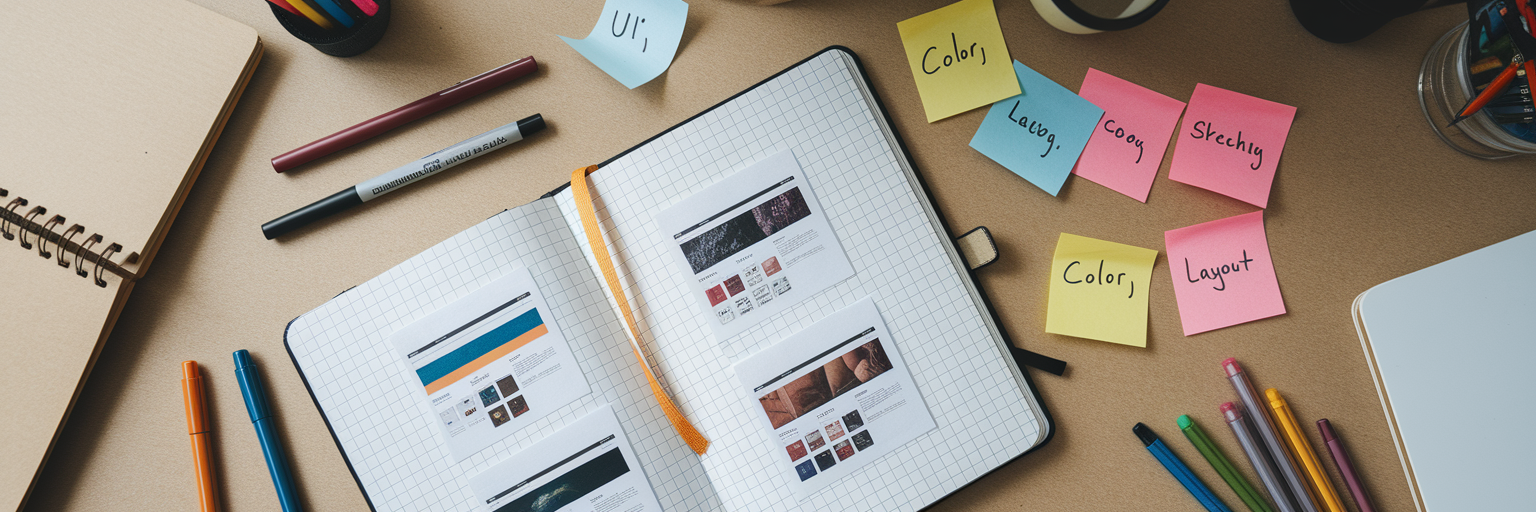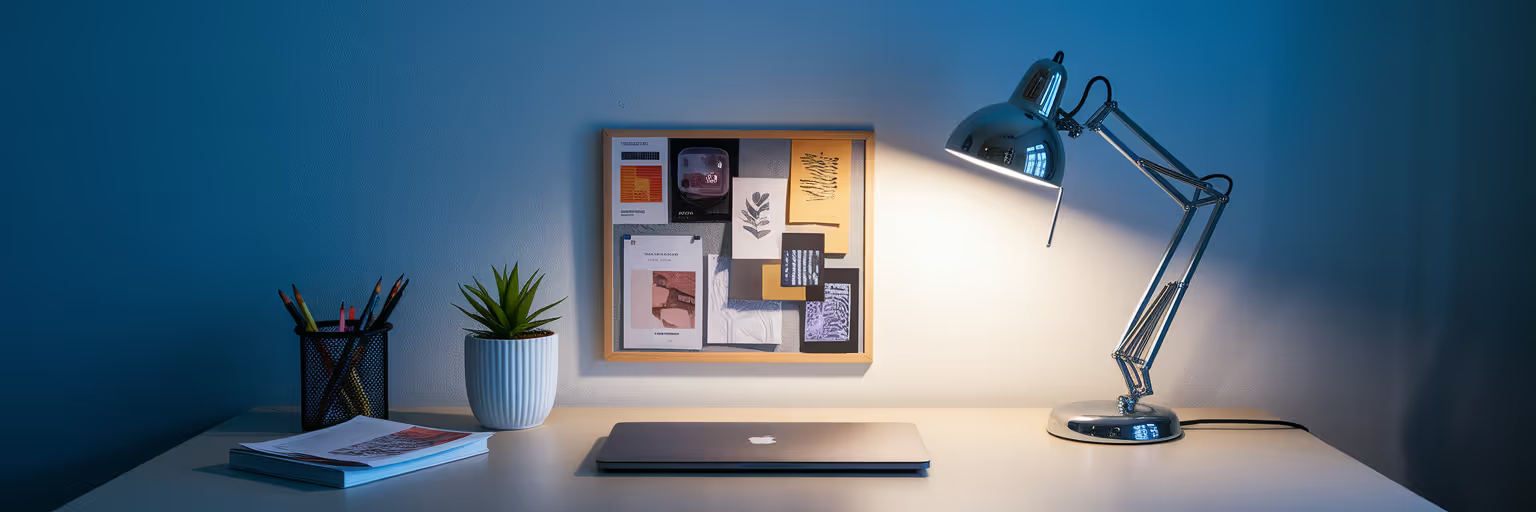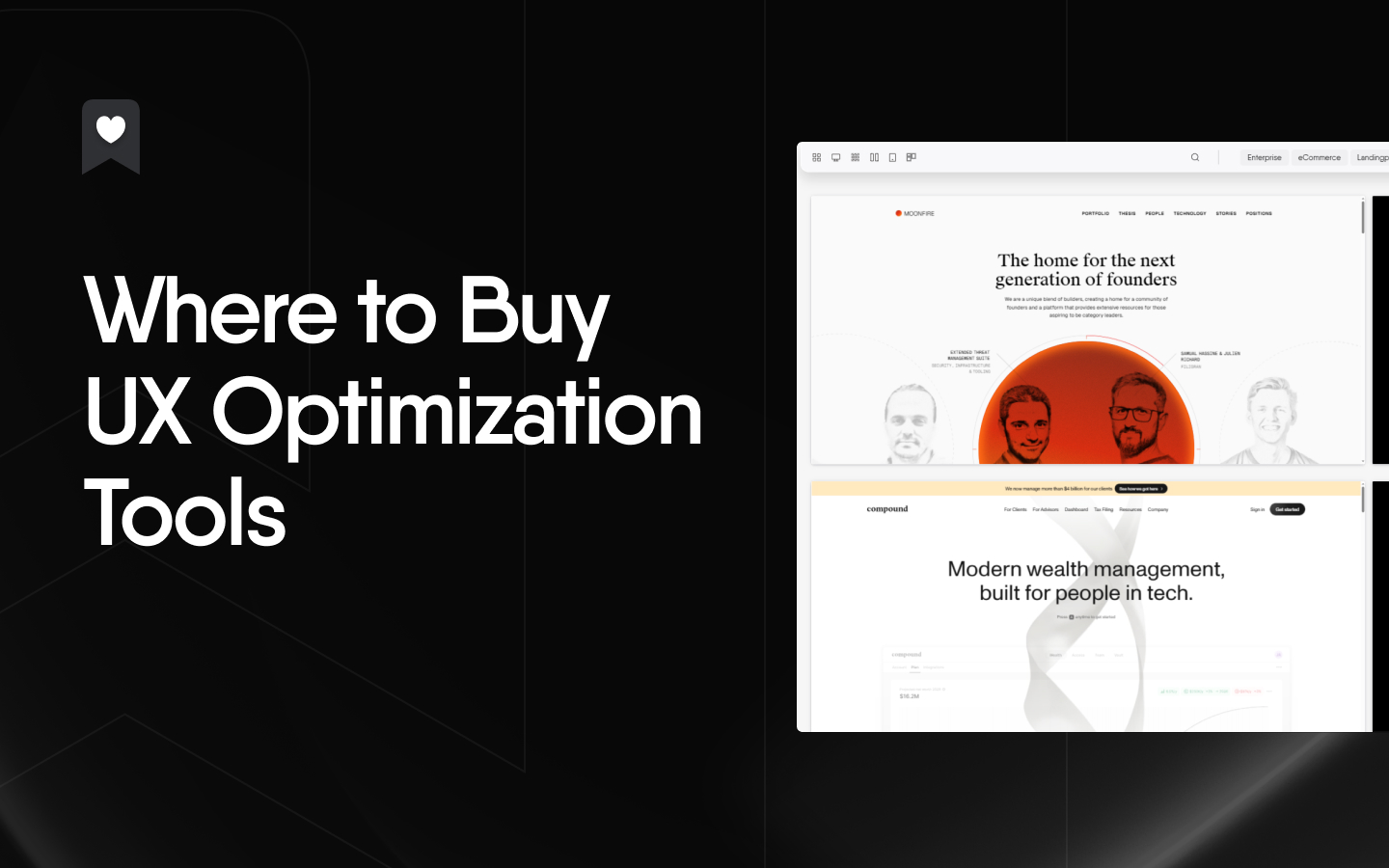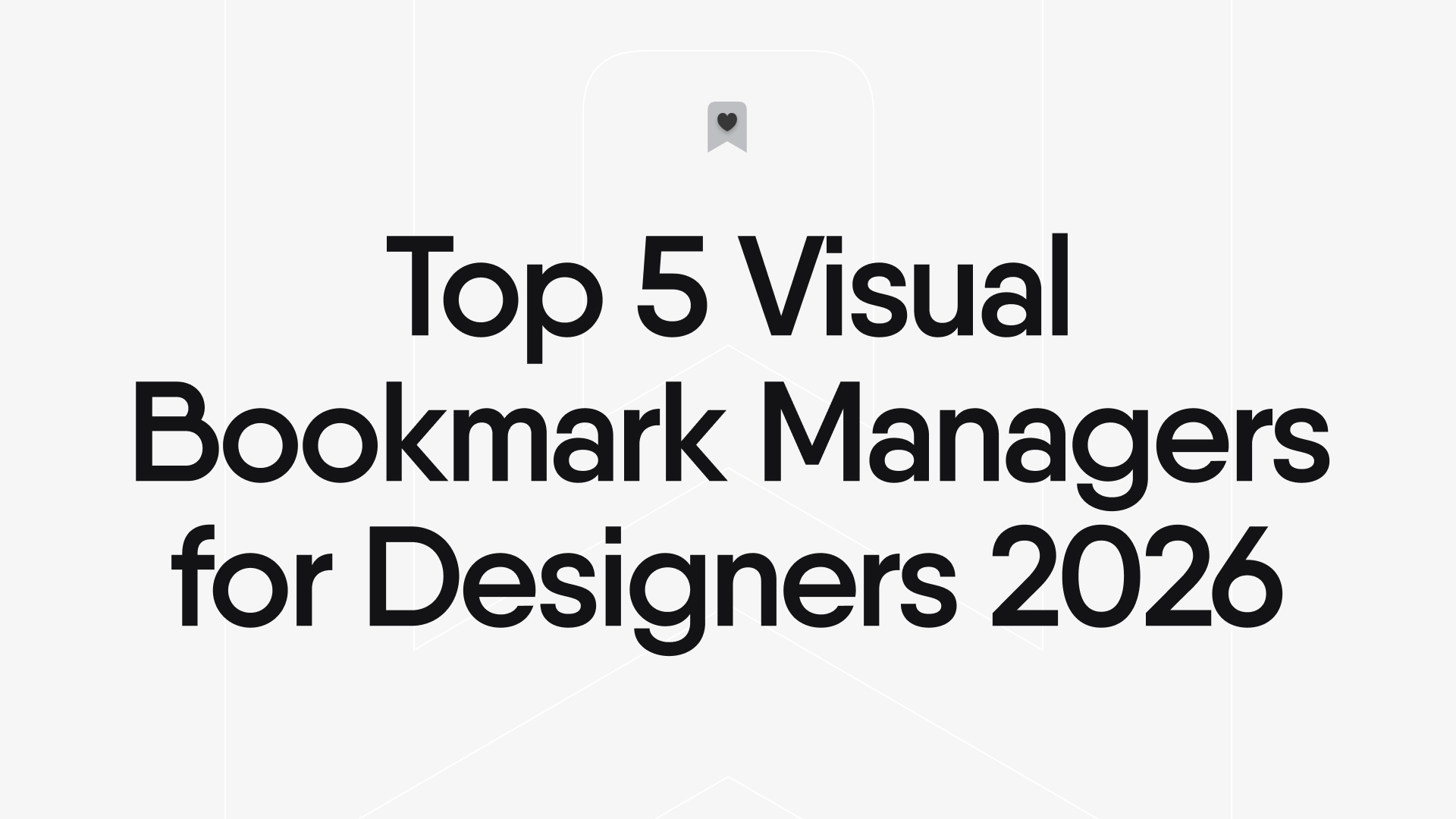We have all been there. You have dozens of tabs open, a desktop littered with screenshots, and that nagging feeling that the perfect idea is buried somewhere in the chaos. The endless scroll on Dribbble or Pinterest promises a spark of genius but often delivers a wave of creative paralysis instead. It is a strange feeling, being surrounded by infinite ideas yet unable to start.
This is the modern creative’s inspiration paradox. An overabundance of resources can make it harder, not easier, to get a project off the ground. The solution is not about finding more inspiration. It is about building a smarter, more intentional system to curate daily design inspiration and manage it effectively. Ready to turn that digital mess into a streamlined, searchable library? Let's get started.
The Modern Creative’s Inspiration Paradox
Picture this: you sit down to work on a new landing page, and your first step is to find some fresh ideas. An hour later, you are lost in a sea of beautiful but irrelevant designs, your initial goal forgotten. This is not a lack of discipline. It is a natural response to information overload. When faced with too many choices, our brains tend to shut down, making it difficult to make decisions or generate original thoughts.
This cycle of passive consumption creates a significant drain on our creative energy. Instead of feeling energized, we feel defeated before we even begin. The key is to recognize that the problem is not the inspiration itself, but our unstructured approach to collecting it. To avoid creative overwhelm, we need to shift from being passive consumers to mindful curators. This article will guide you through creating a system that transforms your relationship with inspiration, making it a source of fuel, not friction.
From Passive Scrolling to Active Seeking

The first step in refining your design inspiration workflow is a crucial mindset shift. It is time to move from passively scrolling through feeds to actively seeking ideas with a clear purpose. Active seeking means you approach your inspiration sessions with a mission. Instead of browsing aimlessly, you define what you are looking for before you even open a new tab.
For example, set a specific goal for each session. Your mission could be, "Today, I am only looking for examples of innovative user onboarding flows," or "I need to find three examples of minimalist typography in e-commerce." This focused approach immediately filters out the noise and makes your search more productive and less draining. As highlighted by Smashing Magazine, looking for inspiration with intent is far more effective than waiting for it to strike.
It also helps to broaden your creative palette. When you need to know how to find design inspiration, look beyond the usual design bubble. Some of the most original ideas come from unexpected places. Try exploring:
- Architectural photography for structural and layout ideas.
- Vintage packaging for unique typography and color combinations.
- Natural patterns in leaves or minerals for texture and form.
- Street art for raw, expressive compositions.
This intentionality transforms a potentially draining activity into a targeted and energizing part of your creative process. You are no longer just looking; you are hunting for specific solutions and concepts.
Building Your Central Inspiration Hub
Once you have adopted an active seeking mindset, the next step is practical. Think about where your inspiration lives right now. Is it scattered across desktop screenshots, saved posts on Instagram, links in a notes app, and a dozen browser folders? This fragmentation is a huge source of inefficiency and stress. Every minute spent searching for that one link you saved last week is a minute you are not creating.
The antidote is a central hub, a single digital sketchbook where every piece of inspiration is stored. This is where a visual bookmark manager becomes essential. Instead of a simple list of URLs, these tools provide a rich, visual overview of your saved content. They are specifically designed to help you organize design ideas without the usual chaos of tab-juggling.
Having a dedicated space allows you to see your collection at a glance. You can analyze layouts, compare color palettes, and spot patterns without clicking through dozens of links. Tools like our own Bookmarkify are built to solve this exact problem, creating a single source of truth for your creative projects. With different view modes like grid, desktop, or mobile previews, you can instantly assess designs and understand their structure, all from within your central hub. This is the foundation for a truly efficient workflow.
The Art of Smart Tagging and Organization

Saving everything in one place is a great start, but it is only half the battle. A library of thousands of items is useless if you cannot find what you need when you need it. Quick retrieval is what truly matters, and this is where smart organization comes in. Many of us are used to traditional folder systems, but they are often too rigid for the fluid nature of creative work.
A tag-based system offers far more flexibility. Instead of forcing an item into a single folder, you can assign multiple descriptive tags. This creates a web of connections that makes your library searchable and dynamic. Consider the difference:
| Aspect |
Traditional Folders |
Tag-Based System |
| Flexibility |
Rigid; one item fits in one folder |
Fluid; one item can have multiple tags |
| Context |
Limited context (e.g., 'Websites') |
Rich context (e.g., `UI`, `typography`, `brutalist`) |
| Searchability |
Requires remembering the exact folder location |
Instantly searchable and filterable by any tag |
| Discovery |
Ideas remain siloed and disconnected |
Helps reveal unexpected connections between items |
To make your system even more powerful, add a quick note to each saved item. Ask yourself, "Why did I save this? What specific element caught my eye?" This simple habit turns a bookmark into an annotated resource. Imagine you need inspiration for a fintech app's dashboard. Instead of starting from scratch, you just filter by `dashboard` and `fintech` to see all your relevant examples instantly. This is the power of a well-organized visual bookmark manager. For more tips on refining your creative methods, explore other articles on the Bookmarkify blog.
Turning Curated Ideas into Creative Action
Your beautifully organized inspiration hub is not a museum. Its purpose is not to hoard ideas but to use them as a springboard for new, original work. This is the final and most important step: application. To make this happen, you need to build a bridge between your curated library and your active projects.
One effective technique is to schedule regular "reflection sessions." Set aside time to review your collection without the pressure of an immediate deadline. During these sessions, your goal is to deconstruct what you have saved. Instead of just looking at a design, ask critical questions. "What principle makes this layout work?" or "How can I combine the color palette from this image with the typography from that site?" This process of synthesis and remixing is where true creativity happens.
Try this practical exercise: the "Inspiration Mash-up." Challenge yourself to pick two or three completely unrelated items from your collection and brainstorm a new concept that combines their best elements. This forces you to think outside your usual patterns and can lead to surprisingly innovative ideas. If you need fresh material for your mash-up exercises, check out our curated inspiration collections. Remember, inspiration is a tool to solve a problem, not the end goal itself.
Sustaining Creativity and Preventing Burnout
Finally, it is important to acknowledge that creativity is not a machine you can run at full speed indefinitely. Building a sustainable design inspiration workflow also means knowing when to step away. Creative burnout is a real threat, and as research from sources like the Harvard Business Review shows, it often stems from constant pressure and a lack of restorative downtime.
To protect your creative energy, schedule regular "unplugged" time away from screens. This does not mean you stop seeking inspiration. Instead, find it in the physical world. Visit a museum, walk through a new neighborhood, or simply observe the patterns of light and shadow in a park. These non-digital activities fuel your creativity in a different, more restorative way.
You can also create a "low-effort" inspiration stream to stay engaged without the work. This is where automated curation comes in handy. Services like the Bookmarkify Daily Inspiration feed can deliver fresh ideas directly to you, providing a gentle nudge of creativity without requiring active searching. It is a simple way to keep the well from running dry.
Ultimately, the creative process is personal and often messy. Trust the system you have built, give yourself permission to rest, and view your relationship with inspiration as an ongoing practice, not a problem to be solved once. By balancing intentional seeking with mindful rest, you can avoid creative overwhelm and build a long, fulfilling career.
Ready to take control of your inspiration? Try Bookmarkify for free and start building your central creative hub today.












